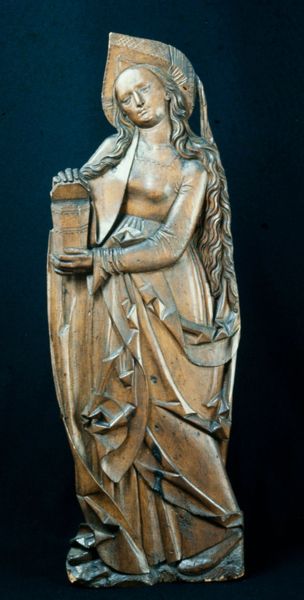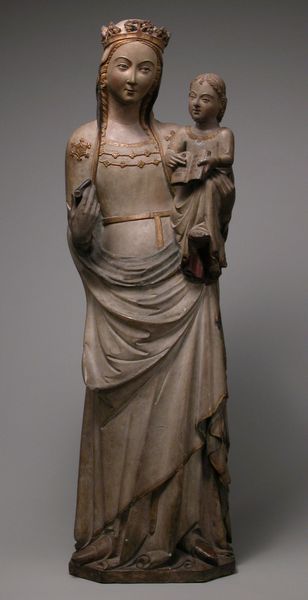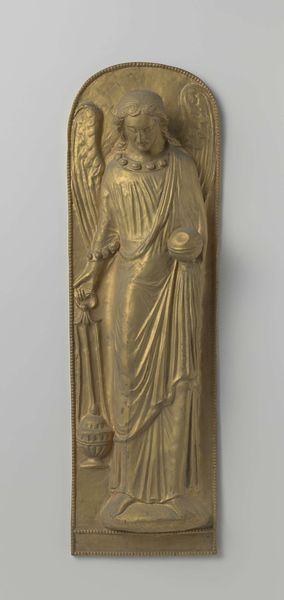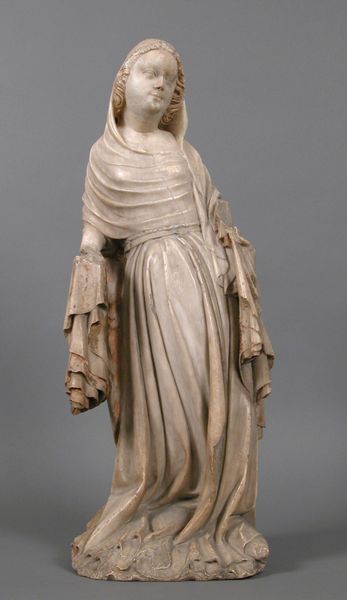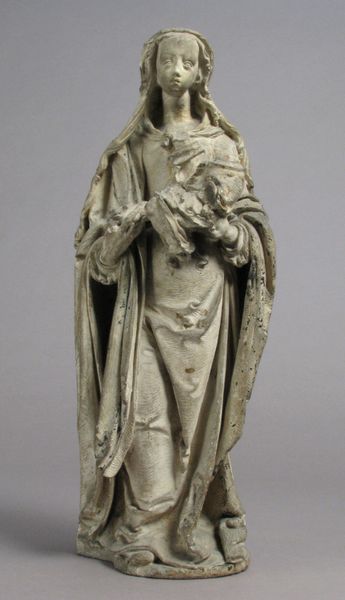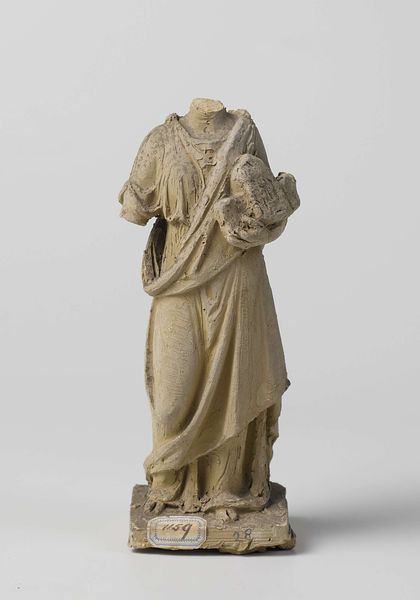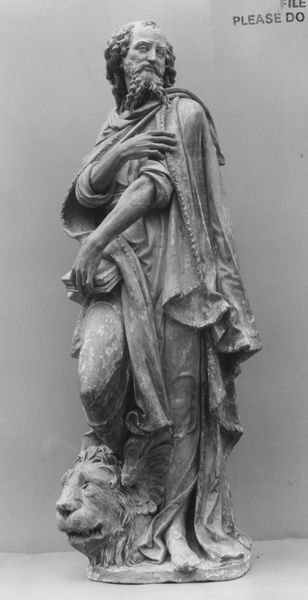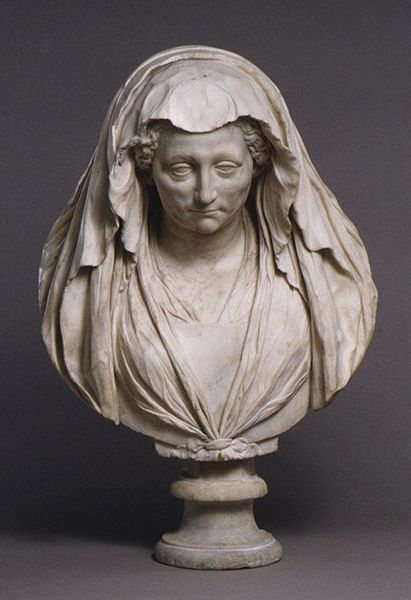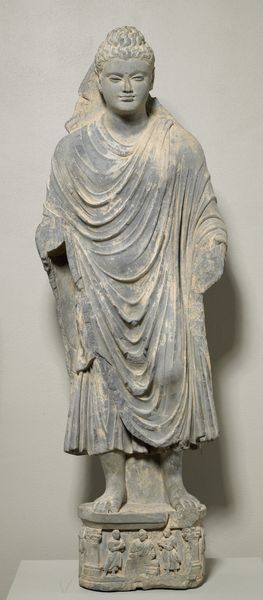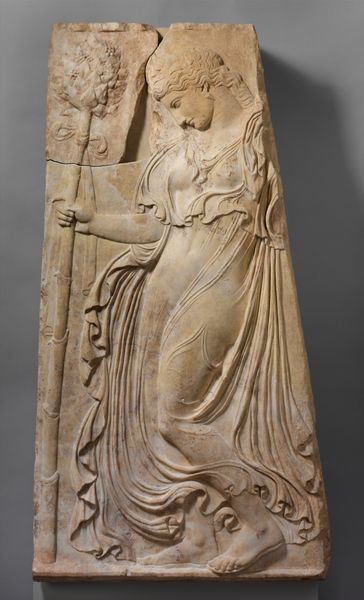
carving, relief, sculpture
#
medieval
#
carving
#
sculpture
#
relief
#
figuration
#
sculpture
#
medieval-art
Dimensions: Overall (ab together): 22 5/16 x 5 1/16 x 2 1/16 in. (56.7 x 12.9 x 5.2 cm) a only: 16 3/8 x 5 1/16 x 1 15/16 in. (41.6 x 12.9 x 4.9 cm) b only: 5 15/16 x 4 7/8 x 2 1/16 in. (15.1 x 12.4 x 5.2 cm)
Copyright: Public Domain
Curator: This is a 15th-century alabaster relief carving of Saint Margaret of Antioch, from the British School, and residing here at the Metropolitan Museum of Art. Editor: My initial response is to the delicacy of the carving. The artist achieved impressive intricacy in the saint's garments and particularly in the Gothic tracery above her. There’s a remarkable contrast between the rigid architectural form and the soft, flowing lines of her robe. Curator: Indeed. Saint Margaret's story, of a woman persecuted for her Christian faith and swallowed by a dragon only to emerge unharmed, became a popular narrative during the Middle Ages, particularly among women seeking strength and resilience. The sculpture acts as a representation of the historical social context during this time, and what resilience truly looked like. Editor: And look how she’s depicted! Crowned and holding a cross, the dragon at her feet clearly vanquished. I note the deliberate use of vertical lines—in the figure, the architectural backdrop—perhaps underscoring a sense of stability and unwavering faith. The book suggests intellectual strength. Curator: Right. The dragon is the embodiment of evil she defeats through faith, and the book represents her learning. Her triumph resonated deeply in a time of immense upheaval and patriarchal structure. The piece is imbued with iconographic significance tied to the cult of female saints. Editor: The remnants of pigment add another layer, drawing attention to key elements—the red around her neck hinting at martyrdom, the details of the crown. Without it, the interplay between light and shadow would soften these elements. Curator: Exactly! I consider how medieval viewers may have understood her defiance not merely as religious piety, but as a challenge to the social hierarchies of the time. What do you make of her seemingly tranquil expression in light of the dragon lying vanquished at her feet? Editor: In that expression, I find an equilibrium, reflecting formal unity and inner serenity that exists, undeniably, in its surface—its careful composure. That surface invites more probing, though, of the relation of parts. Curator: What a fruitful dialogue; I look forward to reconsidering this medieval carving through the lens of its construction and iconographical purpose! Editor: Yes, a wonderful illustration of the tensions and balances informing devotion itself.
Comments
No comments
Be the first to comment and join the conversation on the ultimate creative platform.
